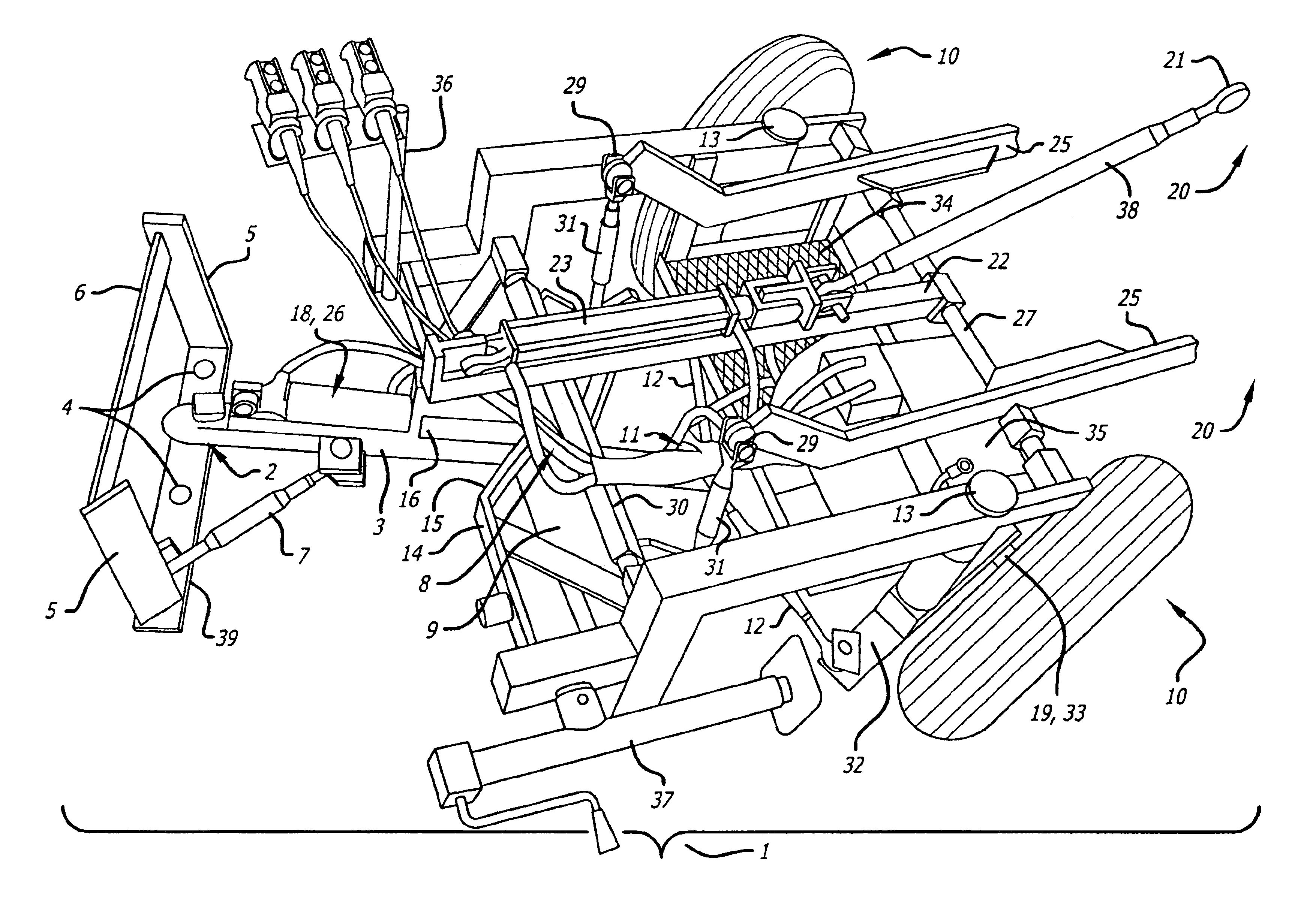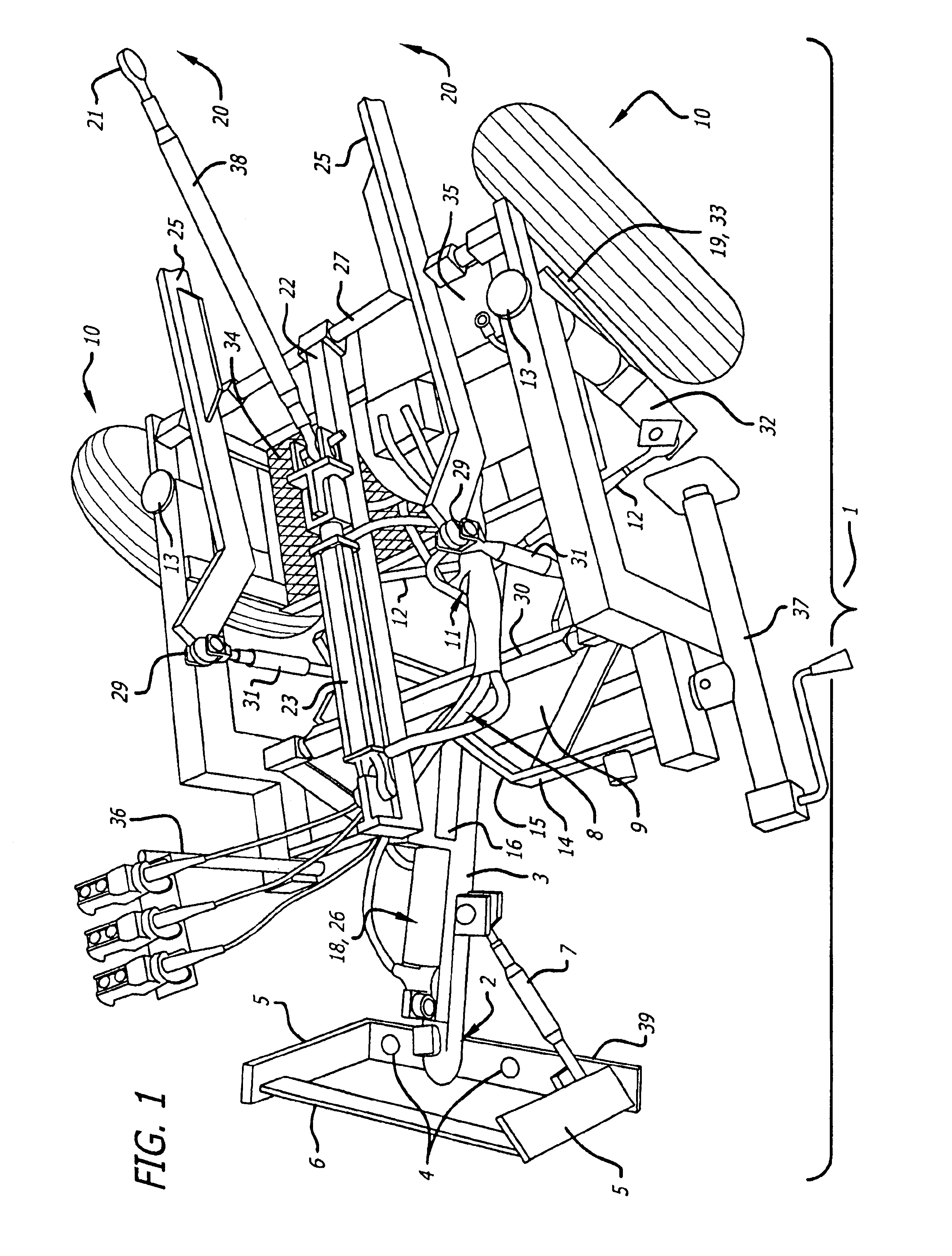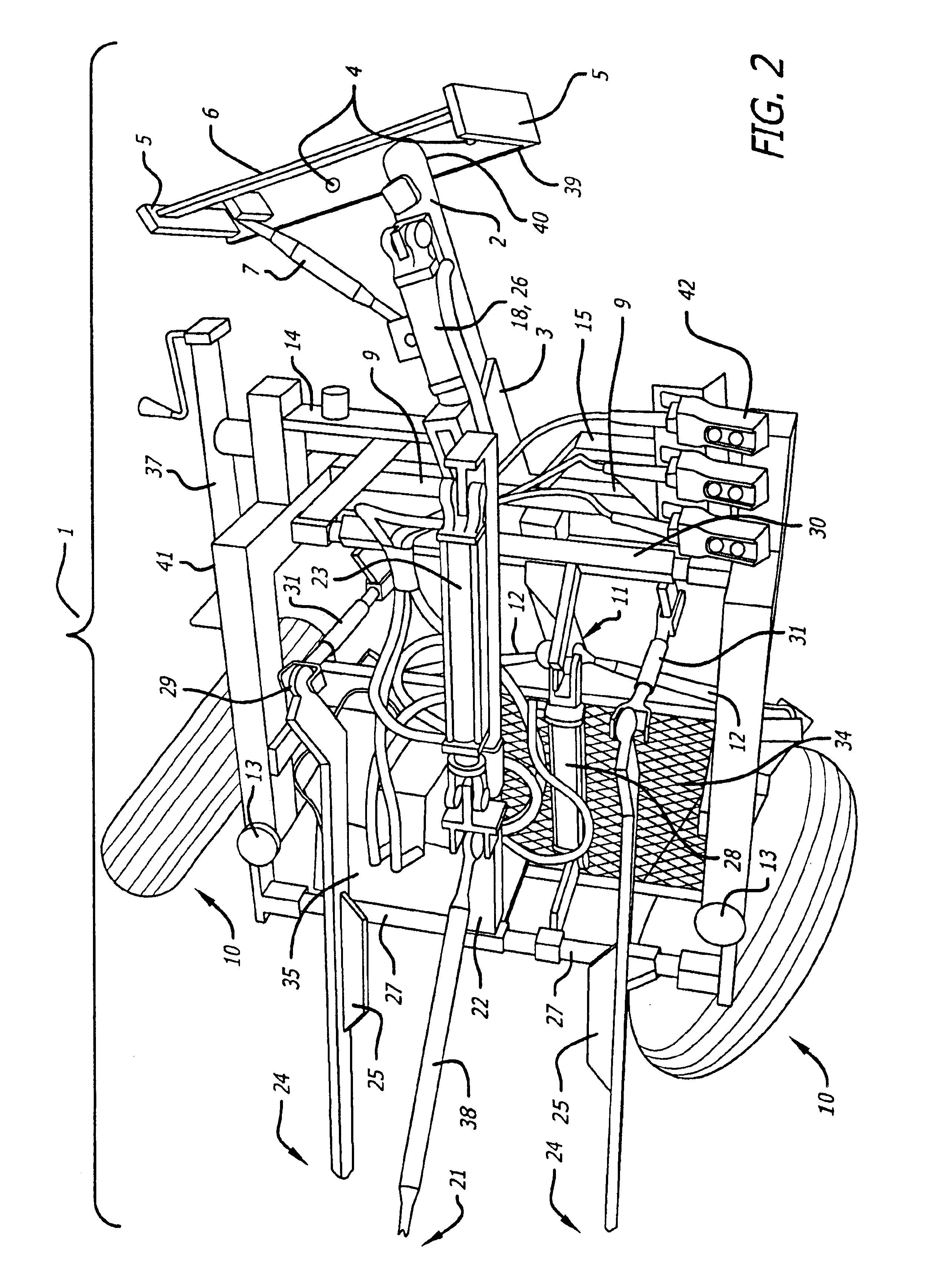Controlled-articulation trailer with synchronized steering and a travelling top link tool bar hitch
a technology of synchronized steering and tool bar hitch, which is applied in the direction of tractor steering, agriculture tools and machines, applications, etc., can solve the problems of small work vehicles that cannot accomplish the things, can not achieve the same degree of speed or quality, and the impact force of small work vehicles is much less, so as to reduce the stress on the hitch. , the effect of large loads
- Summary
- Abstract
- Description
- Claims
- Application Information
AI Technical Summary
Benefits of technology
Problems solved by technology
Method used
Image
Examples
Embodiment Construction
[0032]Various embodiments of the present invention are shown and described. It is to be understood that though these embodiments are shown and described in isolation, various features of each embodiment can be combined with the others to produce a variety of embodiments.
[0033]The present invention is directed to a separate-axle wheeled box-frame trailer 1 equipped with a traveling top-link three point hitch, an attachable dumping flatbed (not shown) and synchronized steering with the degree of articulation controlled. At the fore of the trailer 1 is a hitch-plate 39 with ball, goose neck or other attachment 2 which is received by a female coupling 40 welded to the tongue 3 of the trailer 1. The hitch plate 39 has holes 4 to match the hole spacing on the draw bar of the draft vehicle. Welded to the plate 39 are risers 5 and a horizontal rail 6 to accommodate saddle weights if additional weight on the tongue 3 is necessary. This hitch plate 39 is bolted securely to the draw bar of the...
PUM
 Login to View More
Login to View More Abstract
Description
Claims
Application Information
 Login to View More
Login to View More - R&D
- Intellectual Property
- Life Sciences
- Materials
- Tech Scout
- Unparalleled Data Quality
- Higher Quality Content
- 60% Fewer Hallucinations
Browse by: Latest US Patents, China's latest patents, Technical Efficacy Thesaurus, Application Domain, Technology Topic, Popular Technical Reports.
© 2025 PatSnap. All rights reserved.Legal|Privacy policy|Modern Slavery Act Transparency Statement|Sitemap|About US| Contact US: help@patsnap.com



